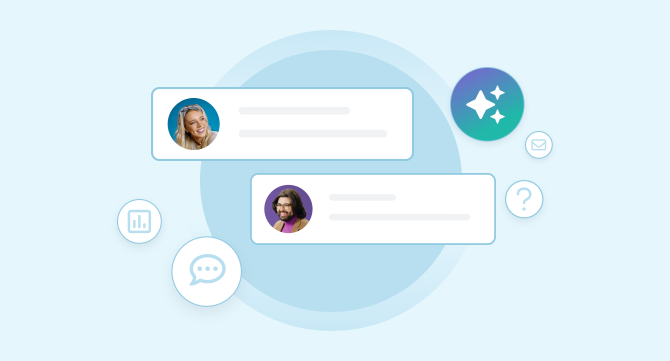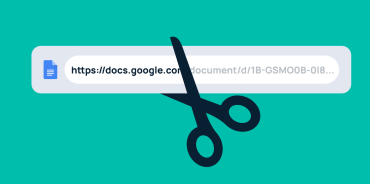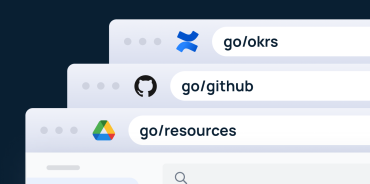Is your company using AI for internal communication? Many companies have started using AI to simplify manual processes and generate content, but it can also be used for different types of internal communication.
In fact, 68% of people believe that AI will have a significant impact on the communication sector in the next five years. This presents a unique opportunity for companies to adopt these new tools to streamline communication and enhance overall efficiency.
In this article, we’ll cover the 6 types of internal communication and highlight some AI tools that can help in each area.
6 types of internal communication
1. Top-down communication
Top-down communication refers to the flow of information from senior management to employees. It’s a structured approach used to disseminate critical company-wide announcements, policies, and strategic directions. This type of communication is essential for ensuring that everyone in the organization is aligned with the company’s goals and objectives.
- Traditional tools: Emails, company newsletters, intranet, company announcement tools, management dashboards, and town halls. These tools facilitate broad reach and ensure that the message is uniformly received across the organization.
- Example: A CEO’s quarterly update sent via email or a live-streamed town hall meeting that provides a platform for leadership to discuss company performance and future plans directly with employees.
2. Bottom-up communication
Bottom-up communication allows employees to share their feedback, concerns, and ideas with management. This type of communication is critical for creating a culture of openness and inclusivity. It ensures that leadership is attuned to the issues and ideas that matter most to employees — so they can improve the employee experience.
- Traditional tools: Employee surveys, feedback forms, suggestion boxes, and town hall meetings with open Q&A sessions. These tools enable employees to provide input in a structured and anonymous manner if desired.
- Example: An anonymous suggestion box for employees to submit feedback on company policies, or regular town hall meetings where employees can ask questions and provide input directly to senior management.
3. Peer-to-peer communication
Peer-to-peer communication involves interactions between employees at the same hierarchical level. It is fundamental for collaboration and team cohesion. This type of communication supports the sharing of knowledge and skills among colleagues.
- Traditional tools: Instant messaging platforms (e.g., Slack, Microsoft Teams), collaborative tools (e.g., Trello, Asana), and social media groups. These tools facilitate real-time employee communication and collaboration on projects.
- Example: A project team discussing deadlines and tasks on a Slack channel or using Microsoft Teams for a video call to brainstorm ideas for a new feature.
4. Formal communication
Formal communication is structured and official. It includes the exchange of information through officially sanctioned channels and often involves documentation and record-keeping. This type of communication ensures that important information is communicated accurately and professionally.
- Traditional tools: Email, formal reports, company intranet, and official memos. These tools provide a reliable way to communicate important information and maintain records for future reference.
- Example: An annual report detailing company performance and future plans, circulated via email to all employees, or an official memo outlining changes in company policy.
5. Informal communication
Informal communication involves casual interactions that occur naturally in the workplace. These interactions are not structured and often take place spontaneously. Informal communication helps build relationships and a sense of community within the organization.
- Traditional tools: Social media, informal meetings, chat groups, and casual conversations in break rooms. These tools facilitate open and relaxed communication, encouraging employees to share their thoughts freely.
- Example: A group chat discussing a team lunch plan or a casual conversation between colleagues about a new project idea during a coffee break.
6. Crisis communication
Crisis communication involves the dissemination of information during emergencies. It is designed to provide clear, timely information to manage the situation effectively and ensure the safety and well-being of employees.
- Traditional tools: Emergency alert systems, crisis management platforms, SMS notifications, and real-time updates via intranet or mobile apps. These tools ensure rapid and effective communication during a crisis.
- Example: Sending out an immediate SMS alert during a security breach or using an emergency alert system to inform employees of a natural disaster.
AI Tools for each type of internal communication
Leveraging AI tools can significantly enhance the effectiveness and efficiency of communication processes:
AI-powered emails and intranets
Tools like Google’s AI-powered Gmail and AI-enhanced intranets such as LumApps can help automate email sorting, prioritize important messages, and personalize content for employees.
How it works: AI can analyze email content to provide insights and automate routine responses, freeing up time for more strategic communication tasks.
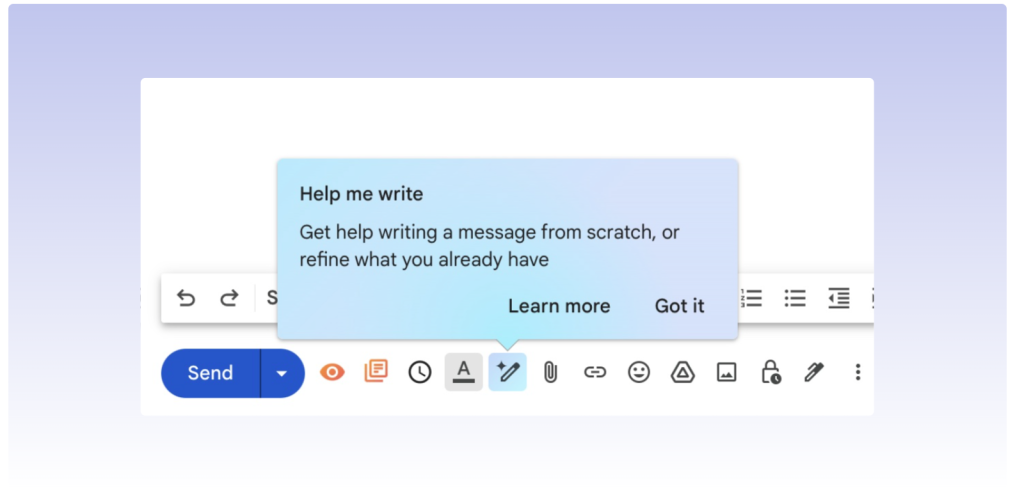
AI-driven instant messaging platforms
Tools like Slack with AI-powered bots and Microsoft Teams with AI features can facilitate real-time peer-to-peer and team communication.
How it works: AI can suggest relevant channels, flag important messages, and even predict team needs based on communication patterns.
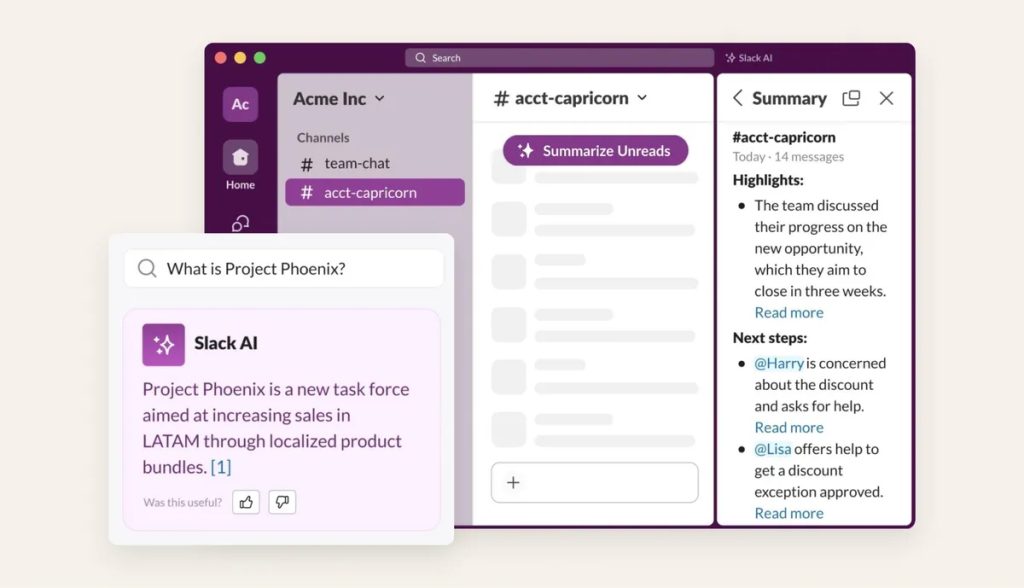
AI-enhanced survey tool
Platforms such as Culture Amp and Qualtrics use AI to analyze survey results, identify trends, and provide actionable insights for bottom-up communication.
How it works: AI can help in understanding employee sentiment and predicting potential areas of concern.

AI-powered link management
Efficient link management is crucial for simplifying access to resources and improving communication. Tools like GoLinks (that’s us!) allow teams to create simple, memorable short links for important resources.
How it works: Type any question in your GoLinks dashboard or Slack, and GoAI will use AI to search across your apps and documents. It returns relevant go link results, making it easier to locate information you need and share it — without sifting through multiple sources.
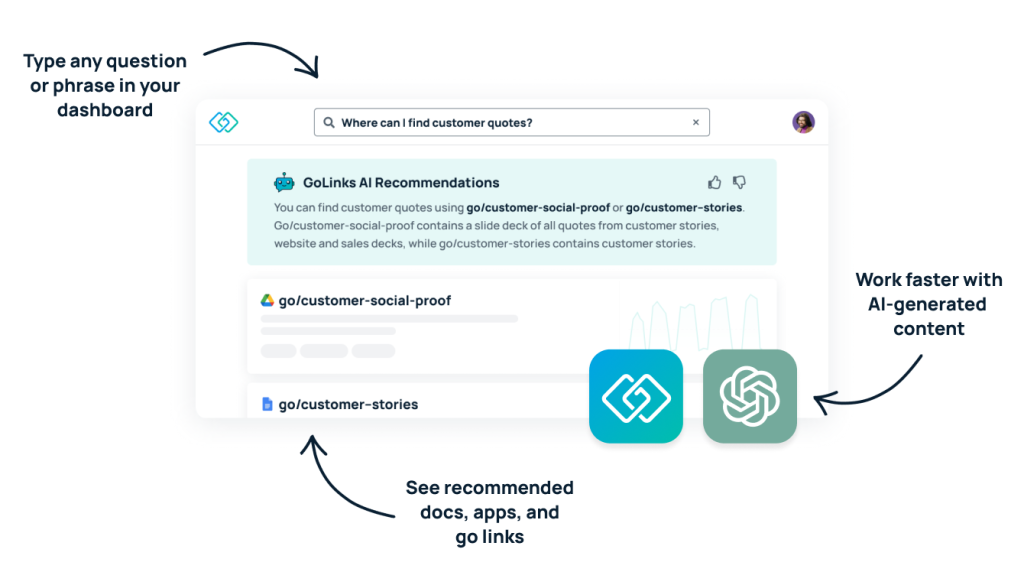
Try GoLinks for free or schedule a demo to see how they can help your team save time and improve communication.
Access and share resources instantly with GoLinks
Try for free
AI-driven collaboration tools
Tools like Trello and Asana now incorporate AI to help manage tasks, automate workflows, and provide recommendations for improving project management.
How it works: AI can analyze project data to identify bottlenecks and suggest improvements for better team collaboration.

AI-powered enterprise search
Tools like GoSearch leverage AI to provide advanced search capabilities within the organization. These tools can index vast amounts of data from various sources, enabling employees to find relevant information quickly.
How it works: AI can understand context, predict search intent, and suggest relevant documents, improving the efficiency of internal communication and reducing the time spent searching for information.
GoSearch also offers internal communication tools such as Company Announcements and Q&As, which AI will surface in search results when employees search for information.
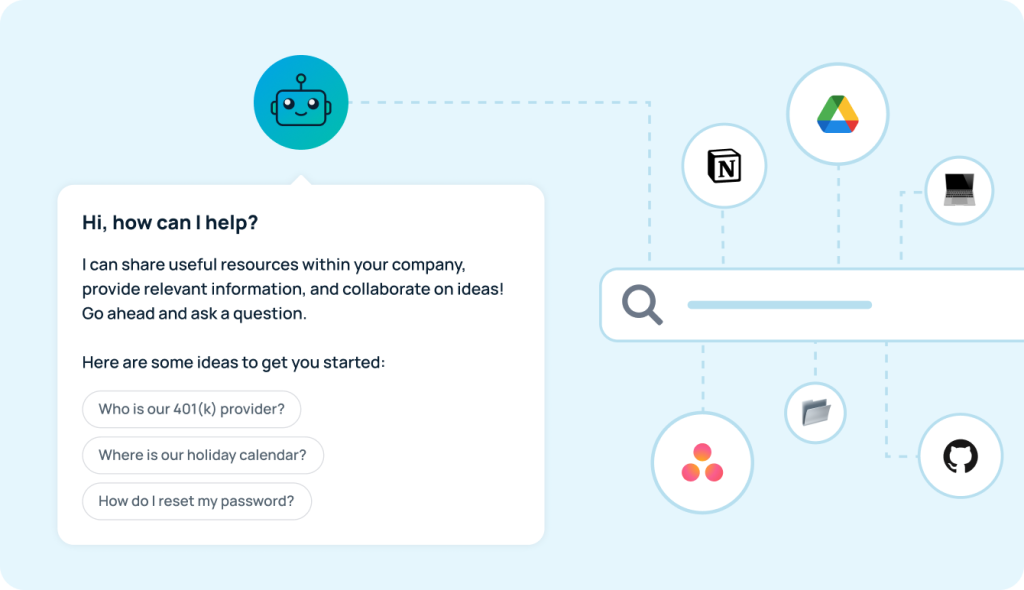
FAQs
What are the types of internal communication?
The primary types of internal communication include top-down communication, bottom-up communication, peer-to-peer communication, formal communication, informal communication, and crisis communication. Each type serves a distinct purpose and plays a critical role in ensuring effective communication within an organization.
How can top-down communication be improved?
Top-down communication can be improved by ensuring clarity, consistency, and timeliness in messages. Using tools like company newsletters, intranets, and regular town hall meetings can help disseminate information effectively and keep employees informed about company policies and strategic directions.
How does peer-to-peer communication enhance company culture?
Peer-to-peer communication fosters collaboration, builds team cohesion, and enhances a sense of community within the organization. It supports the sharing of knowledge and skills among colleagues, which is essential for a positive company culture and a productive work environment.
What role does informal communication play in a company?
Informal communication helps build relationships and trust among employees. It allows for the sharing of ideas and feedback in a less formal setting, which can lead to innovative solutions and a more cohesive team. Informal communication also contributes to a positive company culture and a more engaged workforce.
Why is crisis communication important?
Crisis communication is crucial for managing emergencies effectively. It ensures that all employees are informed and know how to respond in critical situations, minimizing the impact on operations and employee morale. Clear and timely crisis communication can prevent misinformation and panic, ensuring a coordinated response to emergencies.
How can GoLinks improve internal comms?
GoLinks simplifies internal communication by providing easy-to-remember short links for important resources. This makes information easily accessible and reduces the time spent searching for documents. GoLinks also supports collaboration by making it easy to share links to project files, documents, and tools, enhancing overall communication efficiency.
What are the key elements of an effective internal communication strategy?
An effective internal communication strategy includes clear objectives, understanding the target audience, a mix of communication channels, consistent messaging, and feedback mechanisms. This ensures that information flows smoothly and that employee input is considered in communication planning.
How can management communications improve employee engagement?
Management communications enhance employee engagement by fostering transparency, recognizing achievements, and involving employees in decision-making. Open and accessible leadership helps build trust, makes employees feel valued, and aligns them with the company’s vision.
What are some best practices for creating an effective internal communication plan?
Best practices include assessing current communication methods, setting clear goals, choosing appropriate channels, crafting concise messages, and seeking regular feedback. These steps help ensure that communication is clear, relevant, and continuously improving.
